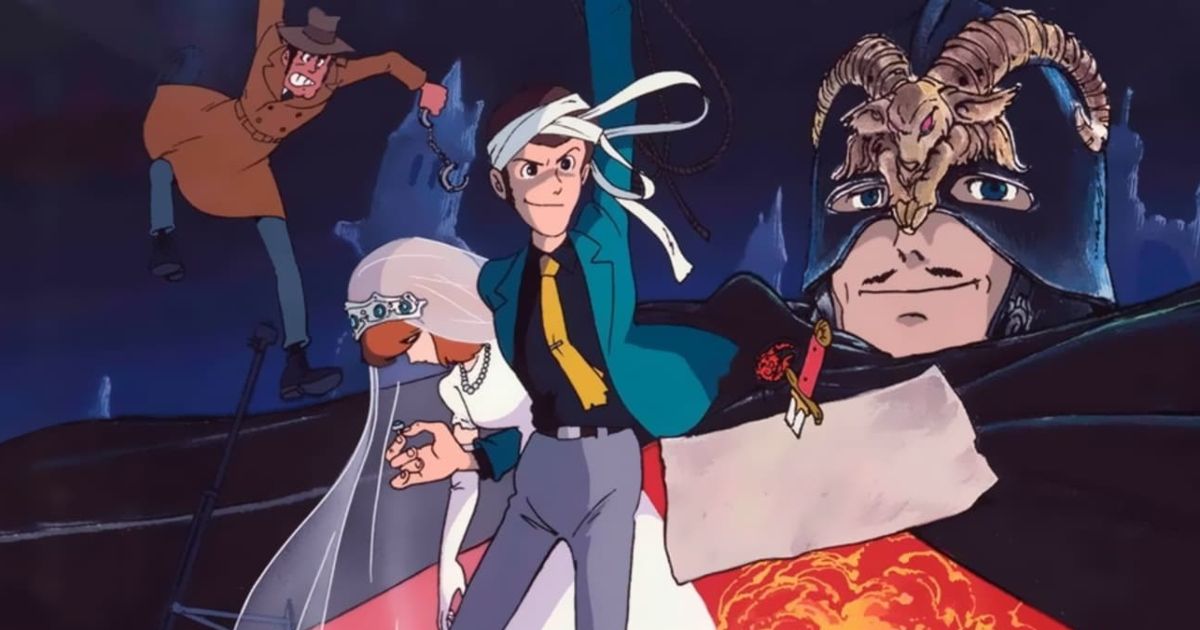It's that time of year again: Hayao Miyazaki is directing yet another Studio Ghibli film, asserting that The Boy and the Heron will be his final film before his retirement. While we'd normally laugh off the sentiment, this time around, it feels pretty genuine. If this truly is Miyazaki's last outing as an animation director, what better time would there be to look back at where his career in anime films began?
And no, we're not talking about his time at Ghibli. Before their official debut with Castle in the Sky, before Nausicaä of the Valley of the Wind led to the studio's formation, even before Studio Ghibli itself, Miyazaki would helm the second film in the beloved Lupin III franchise: The Castle of Cagliostro.
Even though it would be released in 1979, The Castle of Cagliostro represents a cultural touchstone both domestically and internationally, with the film itself even bearing Miyazaki's trademark style half a decade before Nausicaä would hit theaters. You may be surprised to see just how important this film was not just to Miyazaki himself but to filmmaking as a whole.
What Is Lupin III?
There's a good chance that if you were born after the turn of the millennium, you might not even know what Lupin III is. Originally debuting as a manga series in 1965, Lupin III is a comedic-adventure franchise starring the eponymous grandson of Arsène Lupin.
Directly inspired by the works of Maurice LeBlanc, Lupin III wears its influences on its sleeves by combining aspects of LeBlanc's work with the slick, carefree attitude of the original James Bond. The end result is a character who combines the best of both worlds: the world's most wanted thief, a master of deception in a multicolor jacket, and a man whose only real weakness is an infatuation with women.
While the original manga series would focus more on adult content, with depictions of explicit violence, it would be Lupin III's animated offerings that truly cemented the character in pop culture.
An anime series split into multiple parts would begin airing in 1971, and while it would remain aimed at adults, it would accomplish this primarily through mature storytelling instead of harsh content. This was also where Hayao Miyazaki became attached to the franchise, serving as a director for a majority of Lupin the 3rd Part I after working on several projects for Toei Animation.
Why Is The Castle of Cagliostro So Good?
Feature-length films in the Lupin III franchise would make their debut in 1978 with The Mystery of Mamo, a movie that more closely adapts the original manga series. But, it would be the follow-up film, The Castle of Cagliostro, that truly thrust Miyazaki into the spotlight.
While Miyazaki was regulated to only directing during his work on the television series, The Castle of Cagliostro bears his mark in every department. Character designs now have the softer features and jovial expressions of Miyazaki's art, the film's story took on a lighter tone to better portray Lupin as a "hero," and multiple other risqué concepts would see significant alterations under his direction.
Erotic elements featuring the reoccurring character Mine Fujiko were completely omitted, for example, along with other side characters being reworked into more humorous iterations of themselves. While fans of the Lupin III franchise as a whole would find these changes questionable at best, most would agree that they make for a better standalone film as a result.
But even though Miyazaki is working with a property that isn't his own, you can no doubt find his touch in just about every frame. The Castle of Cagliostro features some absolutely breathtaking visuals, most notably in the various painted backgrounds, the film's dynamic car chases, and the quieter moments between bombastic set-pieces.
For 1979, there's some pretty breathtaking stuff on display here. One notable scene featuring an extended car chase is still an impressive piece of action-packed animation, one that would even be snipped from the film and inserted into a LaserDisc arcade game, Cliff Hanger.
Future staples of Miyazaki's work, between unconventional camera angles, detailed character movements, and beautiful scenic shots, also make their debut here, making for plenty of moments that wouldn't feel out of place in a full-on Ghibli movie. The film is even set in Western Europe, a region that will no doubt feel familiar to many Ghibli fans.
Additionally, The Castle of Cagliostro's influence is nothing to scoff at. While unconfirmed rumors of Steven Spielberg taking inspiration from Cagliostro still float around the internet, John Lasseter of Pixar fame would be extremely vocal about his praise for the film, citing it as a key influence in his animation career.
Other animated films, like The Simpsons Movie and Atlantis: The Lost Empire, would use The Castle of Cagliostro as a direct influence in how several action shots were story-boarded. Even the 3D Lupin III: The First film released in 2019 took some notes from Cagliostro during its development.
While The Castle of Cagliostro may lack the emotional core of Ghibli films, you could argue that it makes for an intriguing novelty: it's all about the adventure, the daredevil escapades, the greatest criminal caper ever put to screen. What starts as a campy, almost hilarious adventure gradually transitions into something with a lot more stakes, all while venturing into a type of story that you rarely see from Ghibli as a whole.
If you're a fan of Miyazaki's work but haven't seen The Castle of Cagliostro, there's something pretty special that you've been missing out on. While it may not match up completely with what he would later be synonymous with, it still remains one of the better animated classics of Miyazaki's wide filmography.



